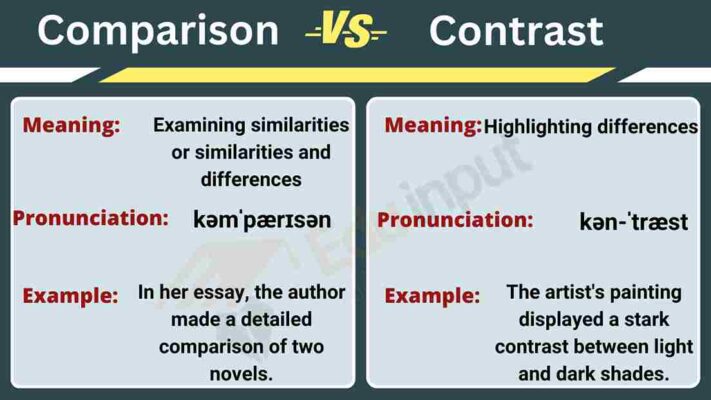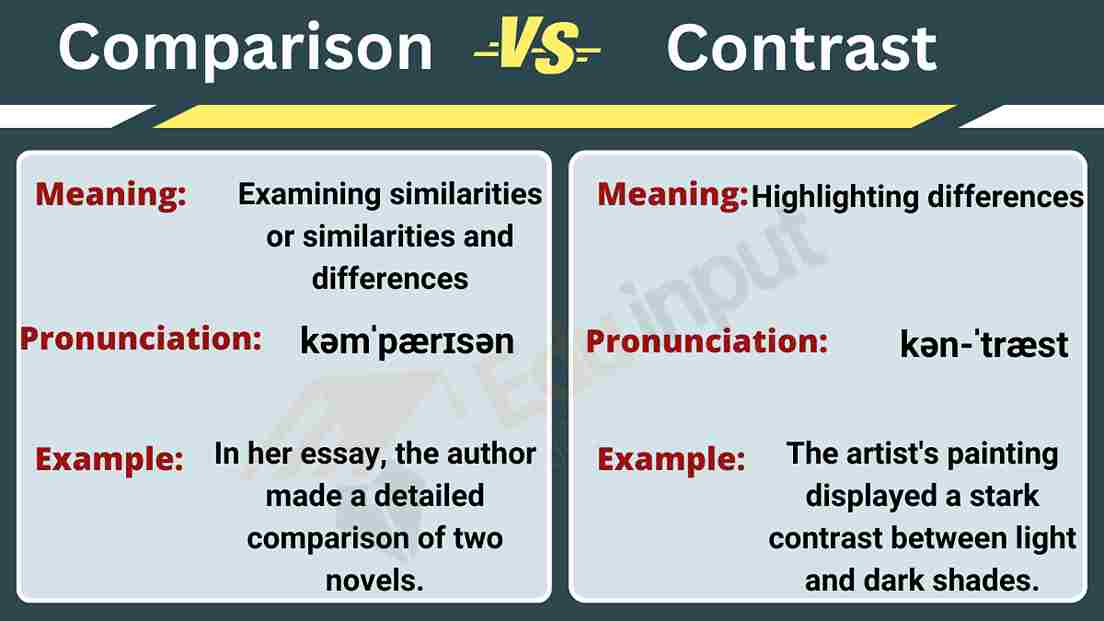A Complete Guide to Writing a Comparison and Contrast Essay
Writing a comparison and contrast essay involves exploring the similarities and differences between two or more subjects. It’s a common academic exercise that helps you develop critical thinking skills and analyze complex topics. Here’s a comprehensive guide to help you ace this essay type:
1. Choose Your Subjects:
- Relevance: Select subjects with a meaningful connection. Don’t compare apples and oranges!
- Depth: Choose subjects you can research and analyze in detail. Avoid overly broad topics.
- Interest: Pick subjects you find engaging to maintain motivation throughout the writing process.
2. Develop a Thesis Statement:
- Clarity: Clearly state the two subjects and the main point of your comparison/contrast.
- Specificity: Avoid generalizations and focus on specific aspects you’ll analyze.
- Direction: Indicate the organizational pattern you’ll use (point-by-point, block, or alternating).
3. Organize Your Essay:
- Point-by-point: Compare/contrast each point for both subjects in separate paragraphs.
- Block: Dedicate a section to each subject, discussing all similarities/differences within each block.
- Alternating: Discuss one aspect of Subject A, then the same aspect of Subject B, for each point.
4. Analyze Similarities and Differences:
- Go beyond the obvious: Look for deeper connections and unexpected similarities/differences.
- Use evidence: Support your analysis with concrete examples, facts, and data.
- Explain significance: Show how the similarities/differences impact your understanding of each subject.
5. Craft Strong Paragraphs:
- Topic sentences: Clearly introduce each point and transition smoothly between paragraphs.
- Supporting details: Use examples, explanations, and evidence to illustrate your points.
- Analysis and interpretation: Don’t just list similarities/differences; explain their significance.
6. Conclusion:
- Summarize key findings: Briefly recap the main points of your analysis.
- Offer insights or implications: Draw a final conclusion about your comparison/contrast.
- Leave a lasting impression: End on a thought-provoking note or offer a call to action.
Additional Tips:
- Use transition words and phrases to connect your ideas and ensure smooth flow.
- Maintain a consistent tone and voice throughout your essay.
- Proofread carefully for grammar, spelling, and punctuation errors.

Resources:
- Purdue University Online Writing Lab (OWL): https://owl.purdue.edu/owl/
- University of North Carolina at Chapel Hill Writing Center: https://writingcenter.unc.edu/
- Grammarly: https://www.grammarly.com/blog/
Remember, a well-written comparison and contrast essay demonstrates your ability to analyze complex topics, draw meaningful connections, and communicate your findings effectively. Good luck!
Feel free to ask if you have any specific questions or need further guidance on a particular aspect of your essay. I’m here to help!

